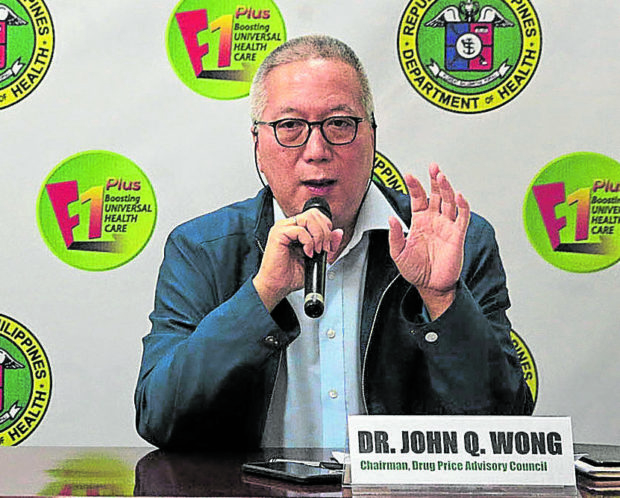
Dr. John Wong INQUIRER FILE PHOTO / GRIG C. MONTEGRANDE
MANILA, Philippines — About half of those who have received their first jab of the COVID-19 vaccine missed their second shot, an expert from the Inter-Agency Task Force for the Management of Emerging Infectious Diseases (IATF) said on Thursday.
Epidemiologist Dr. John Wong, who is a member of the IATF subtechnical working group on data analytics, said about 1 million vaccinees, particularly those given CoronaVac or Sputnik V vaccines for their first shot, have yet to get their second jab, which was supposed to be administered a month after their first dose.
But these vaccinees may still avail themselves of their second dose even past their schedule by coordinating with their local governments, Health Secretary Francisco Duque III said.
Wong cited several reasons for the delay or deferral of the second dose: They may have transportation and scheduling issues, they thought they were already protected after a single shot, or they became afraid after experiencing some side effects.
Different estimate
Vaccine supply could also be an issue, as there might not be enough second doses of the same brand in a particular inoculation center, he added.
But Vaccination Operations Center (VOC) chief and Health Undersecretary Myrna Cabotaje said in a Viber message that the most common reason for deferring the “booster shot” is illness and the subsequent quarantine of vaccinees who may have contracted the virus.
The VOC, however, said only 9 percent of vaccinees have deferred taking their second dose.
Infectious diseases expert Dr. Rontgene Solante said getting only a single dose will result in “short-lived” protection.
“If a vaccine is a two-dose regimen, optimal protection is achieved seven to 14 days after the second dose,” Solante said, adding that local governments must actively follow up on those who missed their second jab.
Health systems specialist Dr. Albert Domingo said some recent real-world effectiveness studies have shown high partial protection from just one dose, but the emergency use authority issued by the World Health Organization and the Food and Drug Administration recommends completing the two-dose regimen.
“For herd immunity or even population protection, we must stick to the full doses. The only exception will be the Jansenn vaccine which is [administered in] just one dose,” Domingo said.
The Department of Health (DOH) recorded 7,217 new Covid-19 infections on Thursday, bringing the country’s total caseload to 1,247,899
With 199 individuals succumbing to the disease, the DOH put the total death toll from the virus at 21,357.
So far, the DOH said 3,483 more patients have recovered from the illness, which brought the total number of survivors to 1,170,752.
55K active cases
The deaths and recoveries left 55,790 active cases, or currently sick patients, majority or, 93.6 percent, of whom are mild cases, 2.0 percent asymptomatic, 1.4 percent in critical condition, 1.8 percent with severe symptoms and 1.27 percent moderate cases. Also on Thursday, the DOH sounded the alarm on rising COVID-19 cases in the country, with the rise in cases in Mindanao outpacing that in Metro Manila.
South outpaces NCR
At an online briefing, DOH Epidemiology Director Dr. Alethea de Guzman said that while areas in the National Capital Region (NCR) Plus have exhibited a “slightly upward trend,” Mindanao and the rest of Luzon have outpaced these areas. There has also been a gradual increase in cases in the Visayas, she added.
“The Mindanao cases are higher than the cases we are seeing in Luzon and NCR,” De Guzman said. According to DOH data, as of June 2, there were 11,391 active COVID-19 cases in Mindanao, while Metro Manila has 10,174 active cases.
In particular, De Guzman said there has been a spike in new cases in Davao City and the Zamboanga region, and “a fast incline” in Luzon, such as in the Cagayan and Central Luzon regions.
The spike could be due to the presence of more contagious variants in the country, as well as the relaxed approach of the public toward minimum health and safety protocols.
Granular lockdowns
Despite the rising number of cases, the DOH is not likely to recommend strict lockdowns, De Guzman said, as she urged local governments to go for granular lockdowns instead and the public to avoid superspreader events. De Guzman said the country’s death toll from March to May 2021 has accounted for 30 percent of all COVID-19 deaths in the country since the pandemic began.
This was not unusual, she added, citing the surge in cases in April and May. DOH data shows that there were 1,928 deaths in March, 3,324 in April and 2,389 in May.

